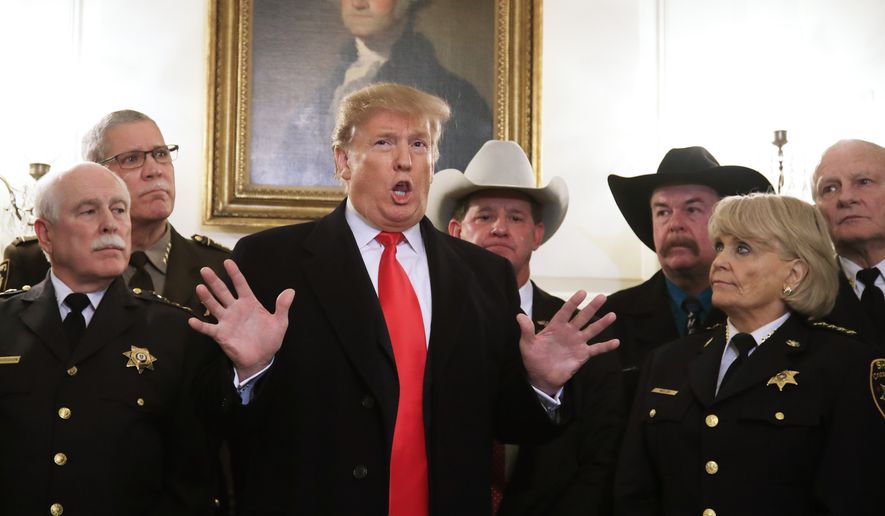President Trump signed an executive order Monday launching a comprehensive national strategy for promoting the development of artificial intelligence, saying it will ensure the U.S. remains ahead of China in cutting-edge technologies.
The president’s order directs the federal government to prioritize research and development of artificial intelligence (AI) capabilities, under coordination through the National Science and Technology Council Select Committee on Artificial Intelligence.
The directive calls for better coordination across government agencies, developing regulatory and ethics rules for the use of artificial intelligence, and requiring federal departments to track spending on research and development of AI.
“With a strong focus on prioritizing R&D investment, removing barriers to innovation, and preparing America’s workforce for jobs of today and tomorrow, the initiative helps strengthen American leadership while remaining true to our nation’s values and priorities,” said Michael Kratsios, an assistant to the president for technology policy.
Sen. Mark R. Warner, Virginia Democrat and vice chairman of the Senate Intelligence Committee, said the president’s order contains several positive steps. But he warned of a “laissez-faire approach” that could overlook misapplication of the technology.
Mr. Warner also said the executive order “treats the impact of AI on the American workforce almost as an after-thought – relegating consideration of upskilling and retraining to existing federal programs.”
Experts in the field of artificial intelligence have expressed growing concern that China is advancing plans for global AI dominance, and that the U.S. needs to catch up. The European Union and the United Kingdom also have pledged significant spending on AI research and development.
Mr. Trump’s executive action doesn’t devote any new spending on AI, but calls on federal agencies and Congress to “prioritize” such spending.
Artificial intelligence uses data-based algorithms to allow computers to carry out some work ordinarily performed by humans, such as recognizing images. It has applications for many industries, including health care.
But the process requires access to large amounts of data, raising questions about privacy and proprietary concerns among businesses.
Daniel Castro, director of the nonpartisan Center for Data Innovation, said the initiative “will prioritize AI research and training programs and boost auxiliary infrastructure such as data and other inputs.”
“Further, the initiative will help U.S. firms maintain their global advantage,” he said. “While the U.S. currently leads in AI, China is pushing to dominate in AI. The administration’s initiative will help the United States keep pace with China’s progress.
He said if the administration wants its initiative to be transformative, it should ask Congress for “significant funding increases to expand these research efforts” and take a “light-touch” approach to regulation.
Jamie Nafziger, a partner at the law firm Dorsey & Whitney and chair of its cybersecurity, privacy and social media group, said China’s focus on and investment in AI “has challenged the U.S. to do more.”
“It is excellent that the Trump administration is raising the profile of this issue,” she said. “However, access to data is becoming increasingly splintered in the U.S. as states begin to legislate in the vacuum created because we have no comprehensive federal privacy law. What the AI field may need most is funding and greater access to data.”
The president’s order directs regulatory agencies to establish guidance for AI development and use across technologies and industrial sectors and calls upon the National Institute of Standards and Technology to lead the development of technical and safety standards.
• Dave Boyer can be reached at dboyer@washingtontimes.com.




Please read our comment policy before commenting.